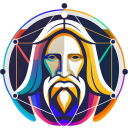Midjourney vs OpenAI: Which AI tool is right for you?
- 01Midjourney vs OpenAI - ChatGPT: overview
- 02What's the difference between Midjourney and OpenAI - ChatGPT?
- 03Midjourney pros and cons
- 04OpenAI - ChatGPT pros and cons
- 05Midjourney compared to OpenAI - ChatGPT
- 06OpenAI - ChatGPT compared to Midjourney
- 07Features comparison
- 08Midjourney vs OpenAI - ChatGPT: Which is the best for your business?
- 09Promotions on AI Design software
- 10Alternatives to Midjourney & OpenAI - ChatGPT
Selecting the right AI tool for your creative or business needs can amplify innovation and streamline productivity. By harnessing the power of AI for tasks like image generation, language processing, and content creation, these tools can unlock new levels of efficiency and creativity. The good news? There are excellent options on the market to support your goals. The challenge? It can be tricky to determine which one is the best fit.
That’s why we’ve prepared this in-depth comparison of two leading AI solutions—Midjourney vs OpenAI. This guide dives into their core features, highlights their primary differences, and provides you with the insights you need to choose the best tool for your creative or operational needs.
Midjourney vs OpenAI - ChatGPT: overview
Midjourney and OpenAI are two leading contenders in the field of AI-driven development tools, each serving distinct user needs and creative approaches.
Midjourney is celebrated for its powerful image-generation capabilities, producing stunning visuals based on text prompts with an artistic touch. It’s particularly well-suited for creatives, designers, and artists looking to quickly generate unique, high-quality artwork. On the other hand, OpenAI offers a broader suite of AI tools, ranging from image generation to powerful language models like ChatGPT. This versatility makes OpenAI a strong choice for those seeking a more comprehensive AI solution capable of handling various tasks beyond just art, such as content creation, customer support, and data analysis.
Now, let’s explore the Midjourney vs OpenAI comparison to help you make an informed choice for your creative or operational needs.
What's the difference between Midjourney and OpenAI - ChatGPT?
While Midjourney and OpenAI both leverage AI for creative and operational purposes, understanding their key differences can help you choose the best tool for your needs. The primary distinction lies in their areas of expertise and range of applications.
Midjourney is a specialized AI tool known for generating visually striking artwork from text prompts. With its focus on producing high-quality, artistic images, Midjourney is well-suited for artists, designers, and anyone looking to quickly create unique visuals. Its advanced algorithms are optimized for producing highly stylized images, making it ideal for tasks that emphasize creativity and visual impact. Midjourney’s interface is straightforward and designed for users looking to explore image-based AI generation, rather than broader functionality.
In contrast, OpenAI offers a suite of AI tools, including language and image generation capabilities. The flagship language model, ChatGPT, is highly versatile, providing support for text-based tasks like content generation, customer service, and data analysis. OpenAI’s image generation capabilities through DALL-E are robust, though they are part of a broader ecosystem rather than a standalone art-focused tool. OpenAI’s versatility makes it suitable for businesses or creators needing a combination of visual and textual AI tools, allowing them to leverage one platform for a range of AI-powered tasks.
Additionally, OpenAI integrates seamlessly with other applications and offers advanced customization, making it appealing for users looking for a scalable AI solution across various functions. Midjourney’s focus on image generation, on the other hand, makes it a specialized choice for those with specific visual needs.
If your focus is purely on generating captivating images, Midjourney may be your best fit. However, for a broader AI toolkit that spans multiple creative and business applications, OpenAI’s versatility may offer the advantage you’re looking for.
Midjourney pros and cons
What are the advantages of Midjourney?
- High-quality, artistic images: Midjourney is renowned for generating stunning, stylized visuals with intricate detail. Its AI often produces images that appear unique and professionally artistic.
- User-friendly interface: With a straightforward interface, Midjourney is easy to use for beginners and experienced users alike. It’s accessible through Discord, allowing users to generate images quickly.
- Fast image generation: The tool processes requests swiftly, enabling users to experiment with various prompts and styles without long wait times.
- Great for creative inspiration: Midjourney is ideal for artists, designers, and marketers looking to brainstorm or visualize concepts. It can serve as a quick source of inspiration for creative projects.
- Affordable for casual use: Midjourney’s subscription plans are relatively affordable, making it accessible for casual and professional users alike. It offers value for those who need high-quality visuals without hiring a designer.
What are the disadvantages of Midjourney?
- Limited customization and fine-tuning: While Midjourney generates excellent visuals, it lacks some granular customization options, making it challenging to control specific details or styles precisely.
- Focused primarily on image generation: Unlike OpenAI, which offers language models, Midjourney focuses on image creation only. Users needing text-based AI capabilities must use other tools.
- Dependency on Discord: Midjourney operates through Discord, which may not be ideal for users unfamiliar with the platform or looking for a standalone application.
- Occasional inconsistencies: While the tool generally creates high-quality images, results can sometimes vary. Users may need multiple attempts to get the desired outcome.
- Limited commercial rights on basic plans: Midjourney’s commercial usage rights are restricted to higher-tier plans, meaning those on basic plans face limitations in using images for commercial purposes.
OpenAI - ChatGPT pros and cons
What are the advantages of OpenAI - ChatGPT?
- Versatile AI capabilities: OpenAI offers a wide range of tools, from text generation (ChatGPT) to image creation (DALL-E), making it suitable for diverse applications like content creation, customer support, and artistic design.
- Highly customizable: OpenAI's models are customizable and adaptable, allowing developers and businesses to fine-tune them for specific tasks, resulting in a tailored AI experience across industries.
- Strong natural language processing: With models like ChatGPT, OpenAI excels at understanding and generating human-like text, making it valuable for tasks like drafting, summarizing, answering questions, and conversational interactions.
- API integration options: OpenAI provides API access, enabling businesses to integrate its capabilities into their own apps and platforms, adding AI functionality across workflows seamlessly.
- Constant innovation and updates: OpenAI continuously updates its models and tools, improving performance and introducing new features, so users benefit from the latest advancements in AI technology.
What are the disadvantages of OpenAI - ChatGPT?
- Costly for heavy usage: While OpenAI offers free usage plans, costs can increase quickly for businesses or individuals with high-volume needs, especially for advanced models.
- Limitations on specific outputs: Although OpenAI models are powerful, they may not always produce exactly the desired response, requiring iterative prompting or additional fine-tuning to achieve precision.
- Image generation limited in style: DALL-E’s image capabilities are strong but may lack the specific artistic flair seen in Midjourney, making it less ideal for users seeking highly stylized visuals.
- Complexity for non-technical users: While OpenAI offers easy-to-use interfaces like ChatGPT, maximizing its API requires some technical knowledge, which could be a barrier for non-developers.
- Restrictions on sensitive content: OpenAI’s models have strict content moderation, which can limit responses on sensitive topics, potentially frustrating users seeking information on such subjects.
Compare OpenAI - ChatGPT to other tools
Midjourney compared to OpenAI - ChatGPT
Midjourney and OpenAI both offer AI-driven solutions but cater to different creative needs. Midjourney specializes in generating high-quality, stylized visuals, making it ideal for artists, designers, and creative professionals focused solely on image creation. Its intuitive interface and artistic approach enable users to produce unique, visually stunning images quickly.
In contrast, OpenAI provides a broader range of tools, from image generation (DALL-E) to advanced language processing (ChatGPT), which makes it suitable for applications beyond visual art. OpenAI’s versatility and customizability appeal to businesses and creators looking for an all-in-one AI solution spanning both visual and language-based tasks.
Is Midjourney better than OpenAI - ChatGPT?
Whether Midjourney is better than OpenAI depends entirely on user needs and goals. For those focused solely on high-quality, stylized image creation, Midjourney offers a specialized platform with extensive customization options tailored for creative professionals. It’s highly effective for producing visually impressive artwork without needing multiple tools.
However, OpenAI’s versatility makes it a stronger choice for users needing a broader range of AI functionalities, such as language processing and content generation. OpenAI’s tools, like ChatGPT and DALL-E, cater to diverse applications, making it ideal for businesses or individuals requiring both visual and text-based capabilities in a single solution.
What is Midjourney best used for?
Midjourney is best used for generating high-quality, stylized images based on text prompts, making it an excellent tool for artists, designers, marketers, and anyone seeking visually captivating artwork. With its advanced algorithms, Midjourney excels at creating unique, imaginative visuals that range from realistic to highly abstract, perfect for brainstorming, visualizing concepts, and producing digital art. Its user-friendly interface, accessible via Discord, allows users to quickly experiment with different styles and ideas.
Midjourney is particularly popular for creative projects that require expressive, visually impactful imagery without needing extensive technical expertise or the involvement of a professional designer.
Can Midjourney replace OpenAI - ChatGPT?
Midjourney and OpenAI serve distinct purposes, so one cannot fully replace the other. Midjourney is optimized for creating high-quality, stylized images based on text prompts, making it a powerful tool for visual creativity and design projects. However, its capabilities are limited to image generation.
OpenAI, on the other hand, offers a broader suite of tools, including language models like ChatGPT and image generation through DALL-E, supporting tasks across content creation, customer support, analysis, and beyond. For users requiring diverse AI functions—both text-based and visual—OpenAI’s versatility makes it irreplaceable. Therefore, Midjourney complements, rather than replaces, OpenAI’s broader applications.
Is Midjourney cheaper than OpenAI - ChatGPT?
Midjourney and OpenAI have different pricing models, and affordability depends on usage needs. Midjourney generally offers a simpler, more predictable pricing structure, with monthly subscription plans tailored for users focusing on image creation. This can be more cost-effective for creatives or businesses solely needing high-quality visual generation.
OpenAI, however, provides a range of pricing options based on usage, particularly with its API, where costs can add up for high-volume tasks across text and image generation. For single-purpose image generation, Midjourney’s pricing plans are often cheaper. However, for those needing multiple AI capabilities, OpenAI’s flexibility may justify its higher overall cost.
Is there a better AI Design software than Midjourney?
Determining if there’s a better software than Midjourney depends on your specific creative and project needs. Several alternatives focus on AI-driven image generation, each with unique features and strengths.
Alternatives to Midjourney like Groq, DALL-E by OpenAI, Stable Diffusion, and Adobe Firefly cater to different creative goals. For example, DALL-E offers versatile text-to-image capabilities along with broader integration across OpenAI’s suite, while Stable Diffusion is known for its open-source flexibility and customizability. Adobe Firefly, backed by Adobe’s creative ecosystem, excels in professional-grade image editing. Choosing the best tool depends on factors such as artistic style, customization needs, and integration preferences to match your creative objectives effectively.
OpenAI - ChatGPT compared to Midjourney
OpenAI and Midjourney serve distinct purposes in the AI landscape. OpenAI offers a comprehensive suite of tools, including advanced language models like ChatGPT and the image generation tool DALL-E, making it versatile for tasks across content creation, customer service, data analysis, and visual generation. This broad functionality appeals to users needing AI capabilities in both text and image-based projects.
Midjourney, however, is specialized in generating high-quality, stylized images and is tailored for creative professionals focused exclusively on visual art. While OpenAI provides more varied applications, Midjourney excels in delivering unique, expressive imagery for those prioritizing artistic outputs.
Is OpenAI - ChatGPT better than Midjourney?
Whether OpenAI is better than Midjourney largely depends on the specific requirements of the user. OpenAI is an ideal choice for those seeking a multi-functional platform capable of handling various AI tasks, from text processing to image generation, all in one place. Its versatility is particularly beneficial for businesses and individuals who need both creative and operational support, as it can handle everything from customer interactions to data insights.
In contrast, Midjourney’s specialized focus on high-quality, artistic image generation makes it the preferred tool for users whose primary need is for visually stunning, expressive artwork.
What is OpenAI - ChatGPT best used for?
OpenAI is best used for tasks that require advanced language processing, content generation, and versatile AI functionality. With models like ChatGPT, OpenAI excels at understanding and generating human-like text, making it ideal for customer service, drafting content, and interactive chat applications. Its language capabilities extend to summarization, translation, and data analysis, supporting a wide range of professional needs.
Additionally, OpenAI’s DALL-E model offers strong image generation, making it useful for visual tasks as well. This diversity makes OpenAI suitable for businesses, educators, and creatives who need a single platform that supports both text-based and image-based AI applications.
Can OpenAI - ChatGPT replace Midjourney?
OpenAI and Midjourney have different strengths, so OpenAI cannot fully replace Midjourney for specialized creative tasks. While OpenAI’s DALL-E generates high-quality images from text prompts, Midjourney is particularly focused on producing unique, stylized visuals that appeal to artists and designers looking for a strong artistic touch. OpenAI’s versatility makes it ideal for users needing a range of capabilities, including text generation with ChatGPT and general image creation.
However, for users seeking highly specific, expressive image styles, Midjourney’s specialized approach offers a level of creativity and aesthetic focus that OpenAI does not fully replicate, making them complementary tools.
Is OpenAI - ChatGPT cheaper than Midjourney?
Whether OpenAI is cheaper than Midjourney depends on the user’s specific needs and usage volume. OpenAI’s costs vary based on usage, especially with its API, where prices increase with high-volume tasks across text and image generation. For users seeking a variety of AI functions—such as text generation, summarization, and image creation—OpenAI may be more cost-effective since it consolidates multiple capabilities in one platform.
Midjourney, with its subscription-based pricing, may be more affordable for users focused exclusively on high-quality image generation. OpenAI offers more flexibility, while Midjourney is generally a simpler, fixed-cost solution for visual projects.
Is there a better Design software than OpenAI - ChatGPT?
Determining whether there’s a better software than OpenAI depends on your specific AI needs and objectives. Various alternatives to OpenAI cater to unique use cases and offer different strengths.
For example, Google’s Bard and Anthropic’s Claude focus on conversational AI, while tools like Midjourney and Stable Diffusion specialize in image generation. Google Cloud and Microsoft Azure also offer AI platforms with robust customization and integration for enterprise applications. The ideal choice depends on your requirements, such as language versus image processing, customization needs, and budget.
Features comparison
OpenAI Outshines Midjourney for User-Friendliness Across Applications
OpenAI is notably more user-friendly when compared to Midjourney, particularly due to its intuitive interfaces and flexible usage options. For instance, ChatGPT, OpenAI’s language model, is accessible through a web interface that requires no additional setup, making it easy for beginners and advanced users alike to get started with content creation, customer support, or idea generation. OpenAI also offers an API for seamless integration, allowing developers to embed its features into other applications without a complex learning curve.
Conversely, Midjourney operates primarily through Discord, which may feel cumbersome or unfamiliar for those seeking a straightforward, standalone experience.
OpenAI Surpasses Midjourney in Integration Versatility for Broad Applications
When it comes to integration possibilities, OpenAI significantly outperforms Midjourney, especially for users who rely on diverse platforms and systems. OpenAI's powerful APIs allow seamless integration with various applications, including Slack, CRM systems, data processing tools, and customer service platforms. For example, businesses can use OpenAI’s language models directly within customer support software to automate responses or summarize tickets, providing high adaptability across setups ranging from small businesses to large enterprises.
In contrast, Midjourney operates mainly through Discord and offers fewer integration options. While this simplicity benefits creative workflows, it limits adaptability for businesses with complex, multi-platform needs.
Midjourney Outpaces OpenAI in Quality of Creative Image Output
Though both Midjourney and OpenAI are capable tools for generating creative content, the quality of image output from Midjourney consistently surpasses that of OpenAI. Each image generated by Midjourney is meticulously crafted, offering remarkable detail and aesthetic quality that appeals to artists, designers, and professionals alike. This high-caliber output makes Midjourney ideal for professional projects, portfolio pieces, and intricate artistic exploration.
While OpenAI’s DALL-E also generates images and excels in versatility across content types, it lacks the refined, artistically driven sophistication that Midjourney brings to every visual creation, making Midjourney the preferred choice for users seeking top-tier artistic results.
OpenAI Leads Midjourney in Advanced Natural Language Processing Capabilities
In terms of understanding and interpreting human language, OpenAI's NLP technology holds a clear advantage over Midjourney. OpenAI’s models, such as GPT-4, are highly proficient in language comprehension, generation, and even translation, making them versatile tools for various applications.
For example, GPT-4 is used extensively in customer service chatbots, detailed text summarization, content creation, and advanced linguistic analysis. This capability allows businesses to automate responses, analyze sentiment, or generate nuanced reports with accuracy. Midjourney, while impressive in visual generation, lacks a dedicated language processing model, limiting its application primarily to visual projects rather than the expansive language-based functions OpenAI supports.
Both OpenAI and Midjourney Excel in AI-Driven Content Creation for Diverse Applications
When it comes to leveraging AI for content creation, Midjourney and OpenAI offer complementary strengths, excelling in different creative domains. Midjourney transforms text prompts into visually compelling artwork, making it an ideal tool for artists, marketers, and designers who need high-quality visuals for branding, advertising, or concept visualization.
Meanwhile, OpenAI provides powerful tools like ChatGPT for generating text, as well as DALL-E for image generation, catering to a broader range of creative needs. This flexibility enables applications across industries such as digital media, content marketing, and advertising, where teams can produce text-based campaigns, visuals, and multimedia content with ease.
OpenAI Expands Beyond Content Creation with Tailored Business Solutions
Focused on meeting diverse business needs, OpenAI extends its capabilities far beyond content generation to offer custom AI solutions that include data analysis, automated customer support, and workflow automation. For instance, businesses can integrate OpenAI’s language models, such as GPT-4, into customer service systems to handle inquiries, enhancing efficiency and customer experience. Additionally, OpenAI’s tools can be tailored for complex data tasks, allowing organizations to gain insights from large datasets or automate reporting processes.
In contrast, Midjourney’s offerings primarily focus on visual content generation, providing powerful customization for creating striking artwork but without the broader business applications that OpenAI enables.
Midjourney Excels Ahead of OpenAI for Artistic Styles and Customization
Midjourney excels when it comes to offering a diverse range of styles and customization settings, enabling users to fine-tune generated artwork to align closely with their creative vision. Midjourney users can adjust stylistic elements such as color palettes, textures, and overall aesthetics, creating unique, tailored visuals ideal for artistic projects, branding, or design portfolios. For instance, designers can modify prompts to produce anything from futuristic landscapes to vintage-inspired art, providing an unmatched level of control.
OpenAI, while offering customization in its DALL-E model, focuses more on versatility across content types, without the depth of artistic customization and stylistic nuance that Midjourney provides.
Subscribe to our newsletters.
No FOMO here. Stay up-to-date on all the latest deals and news with our monthly newsletter straight to your inbox like 125,000+ entrepreneurs (+ Get 10% off on on our Premium Membership!)
Midjourney vs OpenAI - ChatGPT: Which is the best for your business?
Midjourney is the best tool for you if:
- You prioritize high-quality, visually engaging artwork and need an AI that can generate intricate, stylized images for creative projects, branding, or unique social media content.
- Customization is crucial, and you want the flexibility to adjust color schemes, textures, and styles to match a specific aesthetic or visual theme in your designs.
- Your focus is primarily on image creation rather than text-based AI functionalities, making a specialized tool like Midjourney more aligned with your creative goals.
- You need an intuitive platform accessible through Discord, enabling easy and fast experimentation with artistic ideas and styles without complex setups.
- Generating unique, high-quality images quickly is essential for projects that require an impressive visual impact, such as digital art portfolios or visual storytelling content.
OpenAI - ChatGPT is the best tool for you if:
- You need a versatile AI platform capable of handling both text and image generation, supporting a wide range of applications from content creation to data analysis.
- Custom AI integration is a priority, and you want a solution that can easily embed into existing systems, workflows, or applications to streamline operations and automation.
- Your projects require advanced language capabilities, such as customer support automation, text summarization, or interactive chatbots, which OpenAI’s NLP models excel in delivering with accuracy.
- Flexibility is essential, and you value OpenAI’s adaptability to serve different business functions, enabling seamless shifts between creative and operational tasks.
- Cost-effectiveness matters, and you seek a comprehensive solution that combines multiple functionalities, minimizing the need for separate tools for text and visual content generation.
Alternatives to Midjourney & OpenAI - ChatGPT
Promotions on AI Design software
Start saving on the best SaaS with Secret.
Secret has already helped tens of thousands of startups save millions on the best SaaS like Midjourney, OpenAI - ChatGPT & many more. Join Secret now to buy software the smart way.












